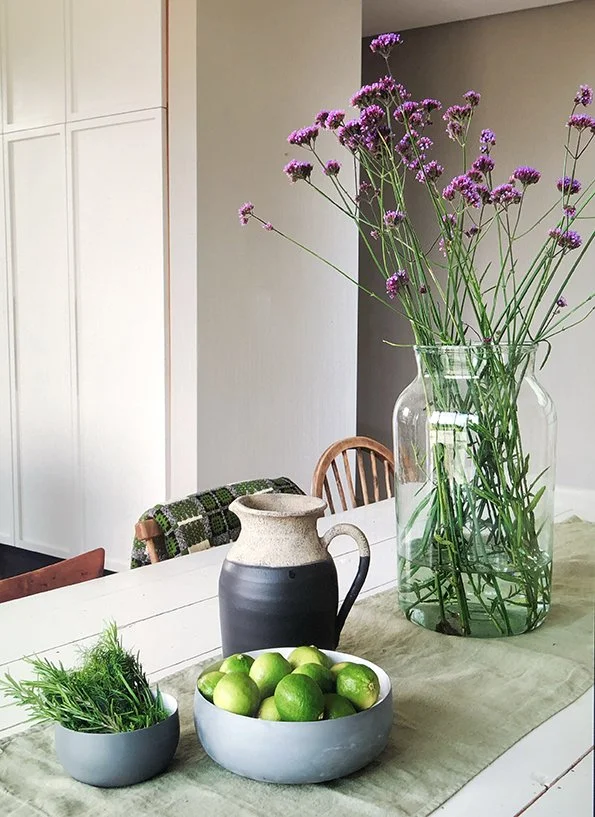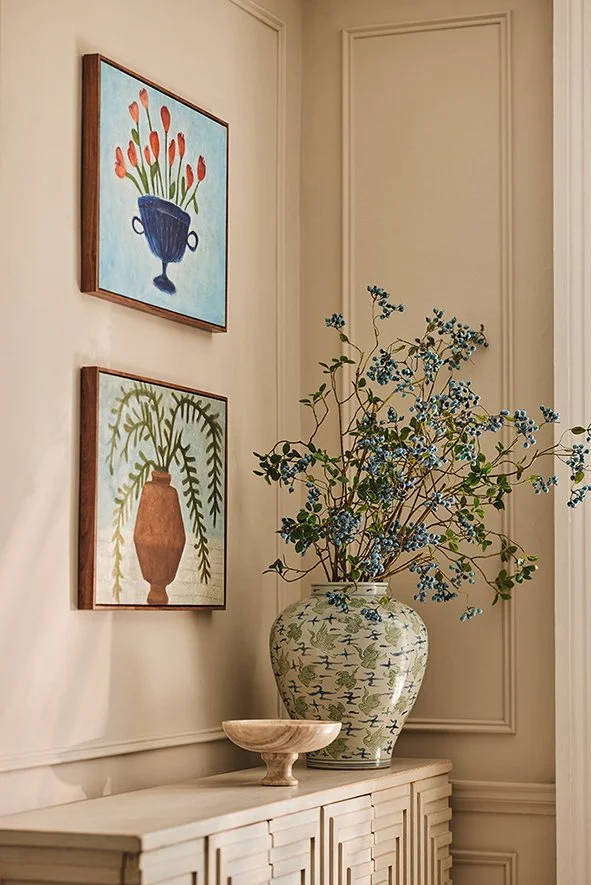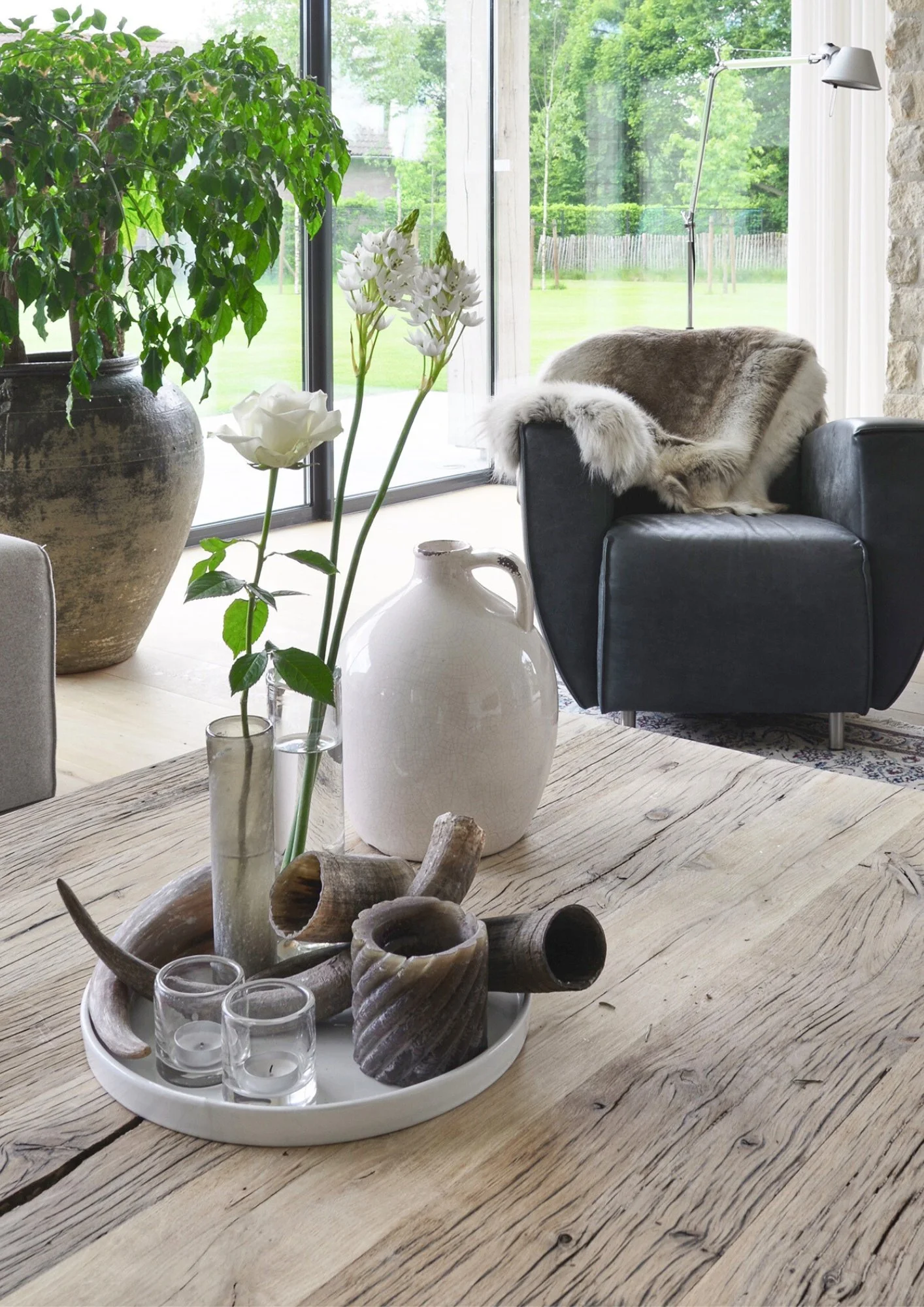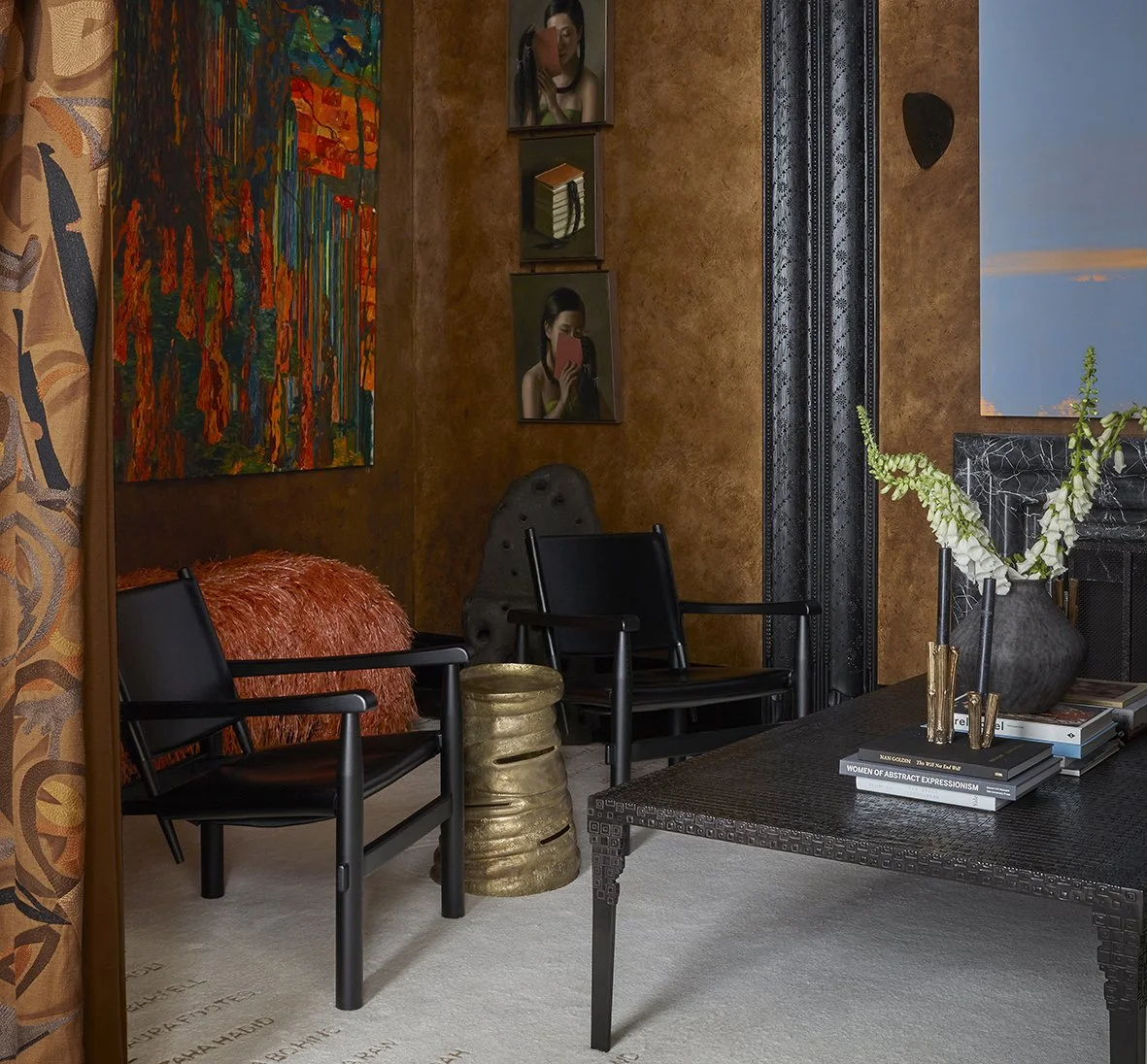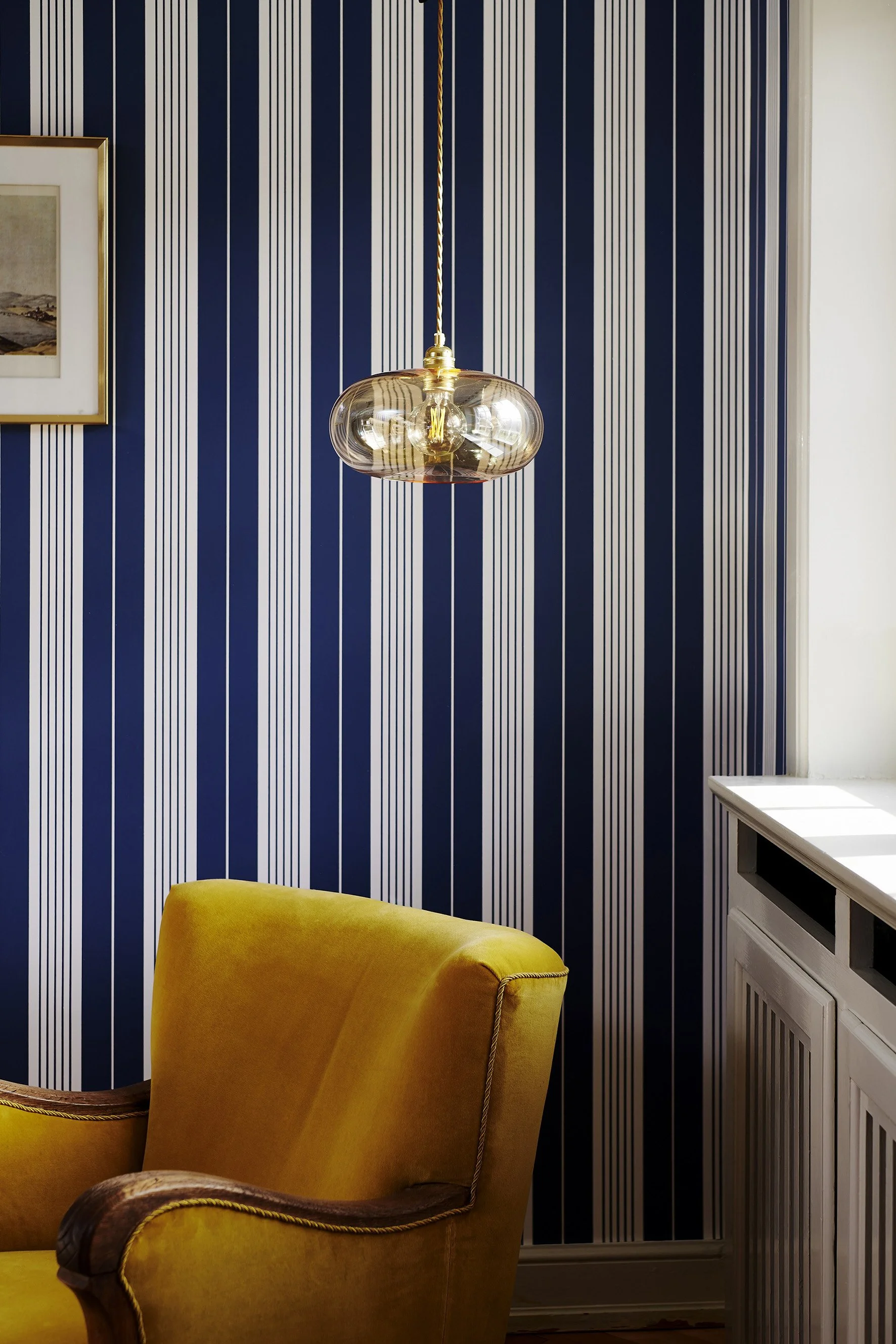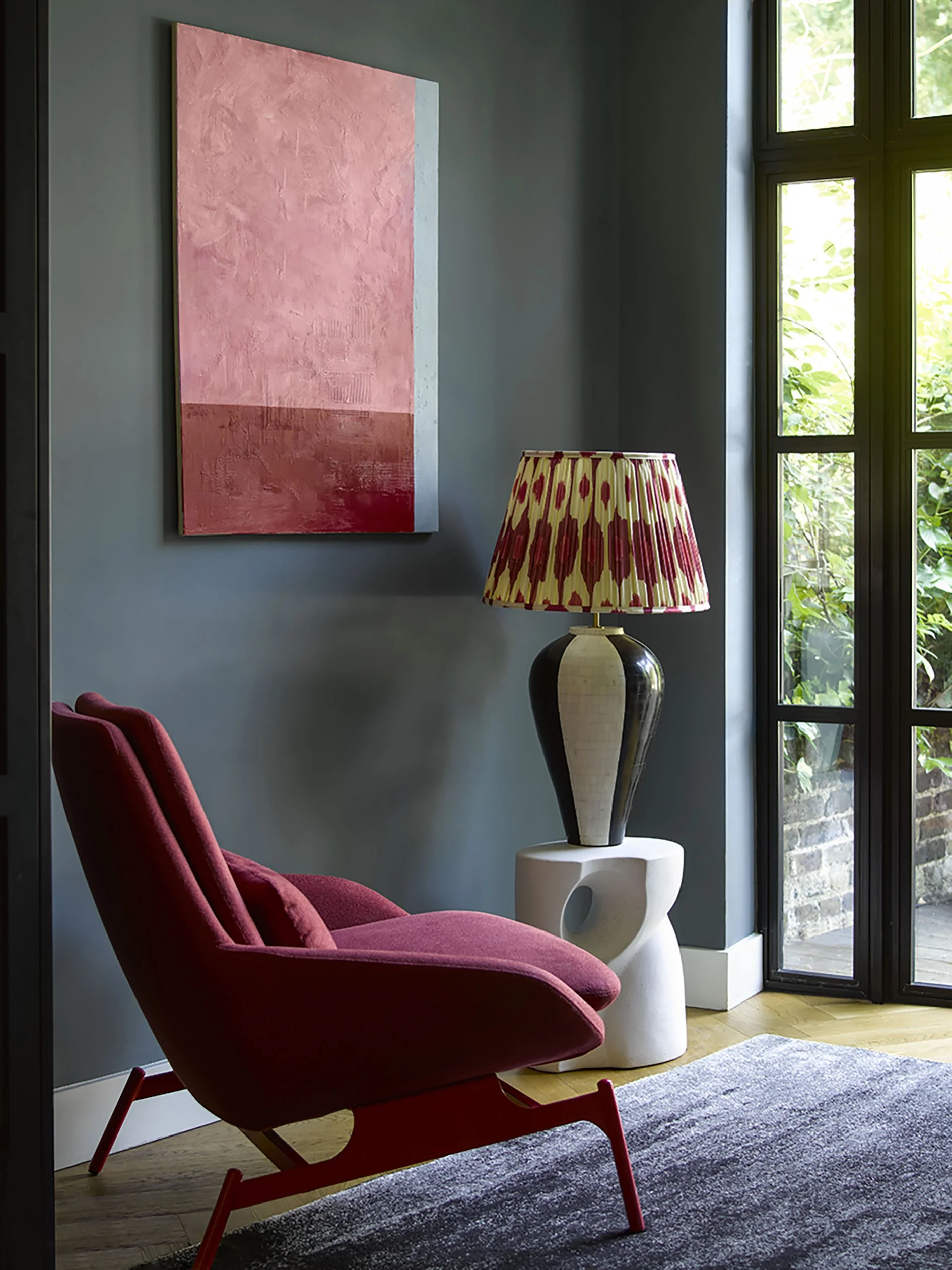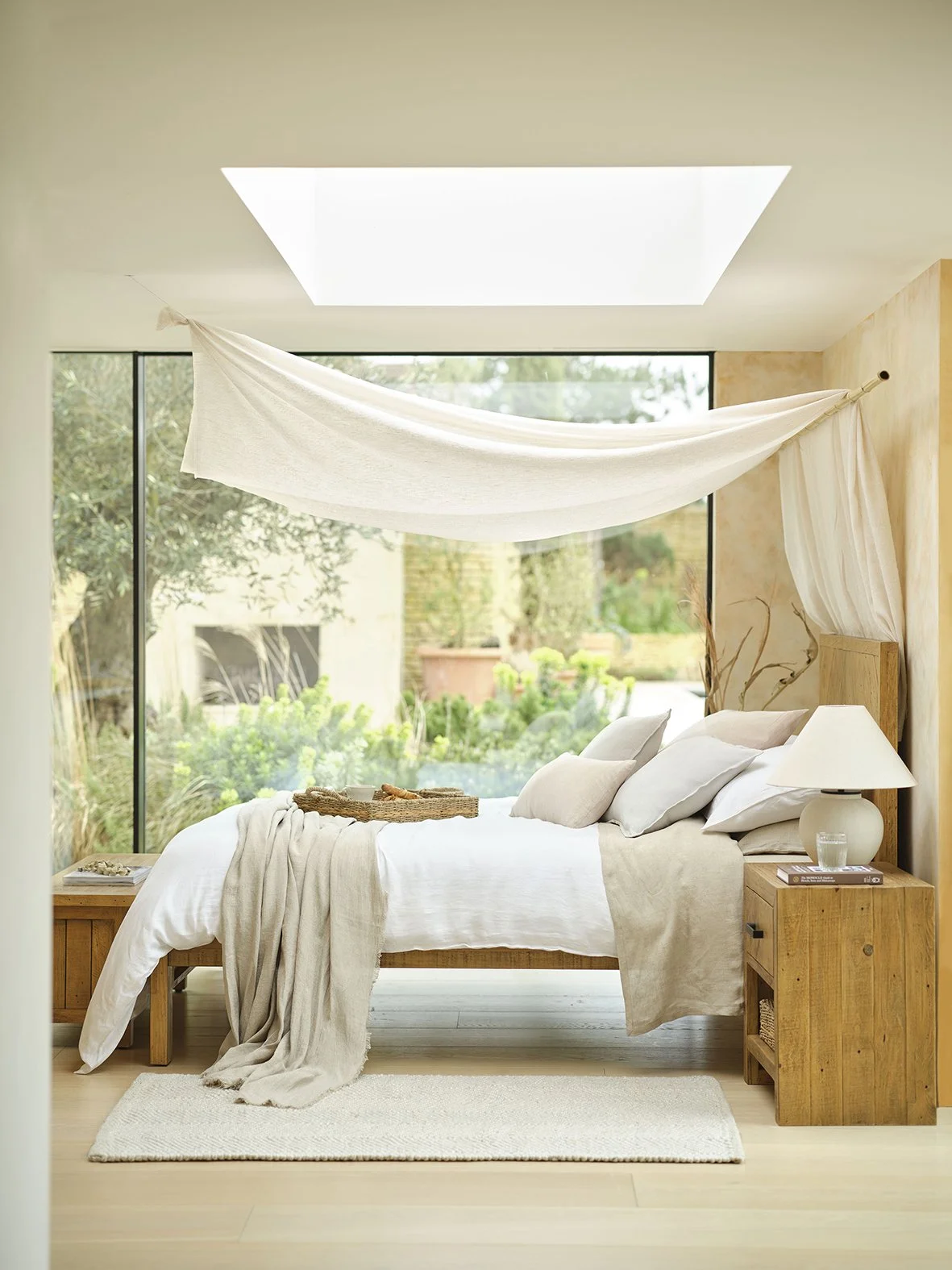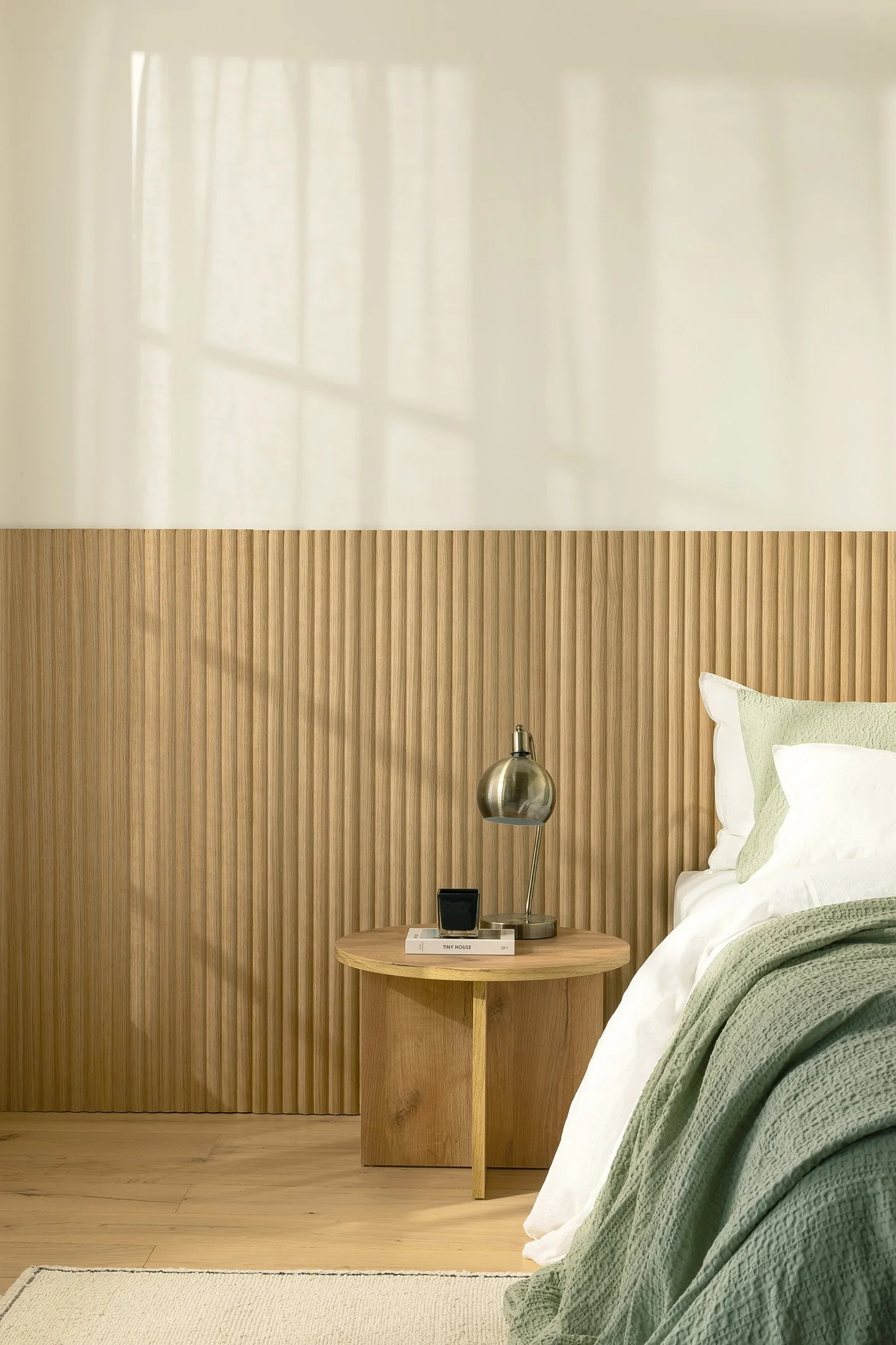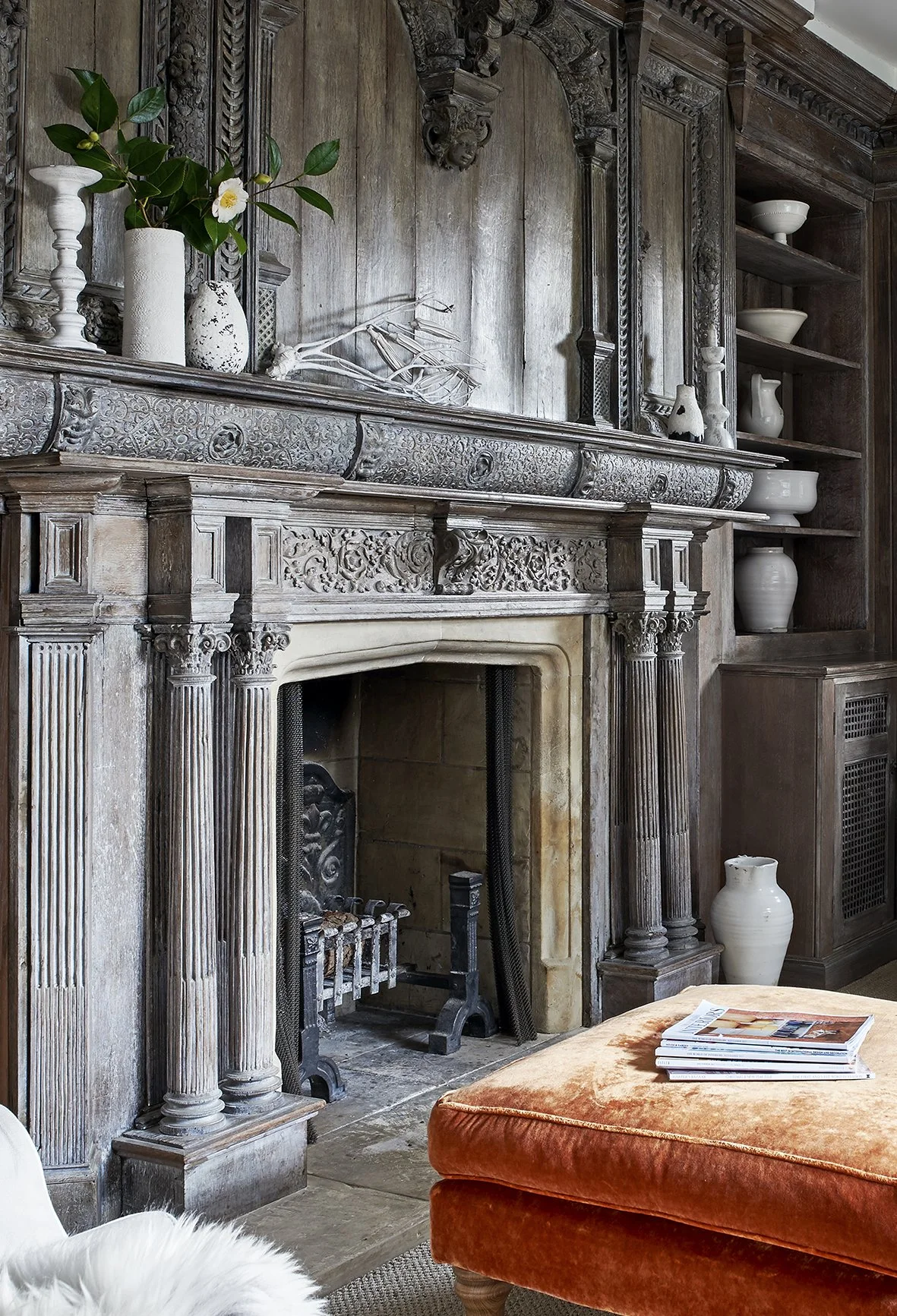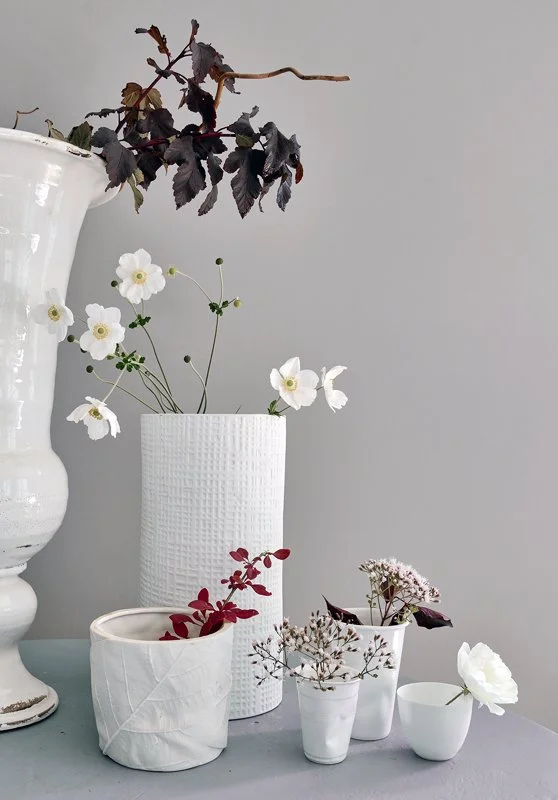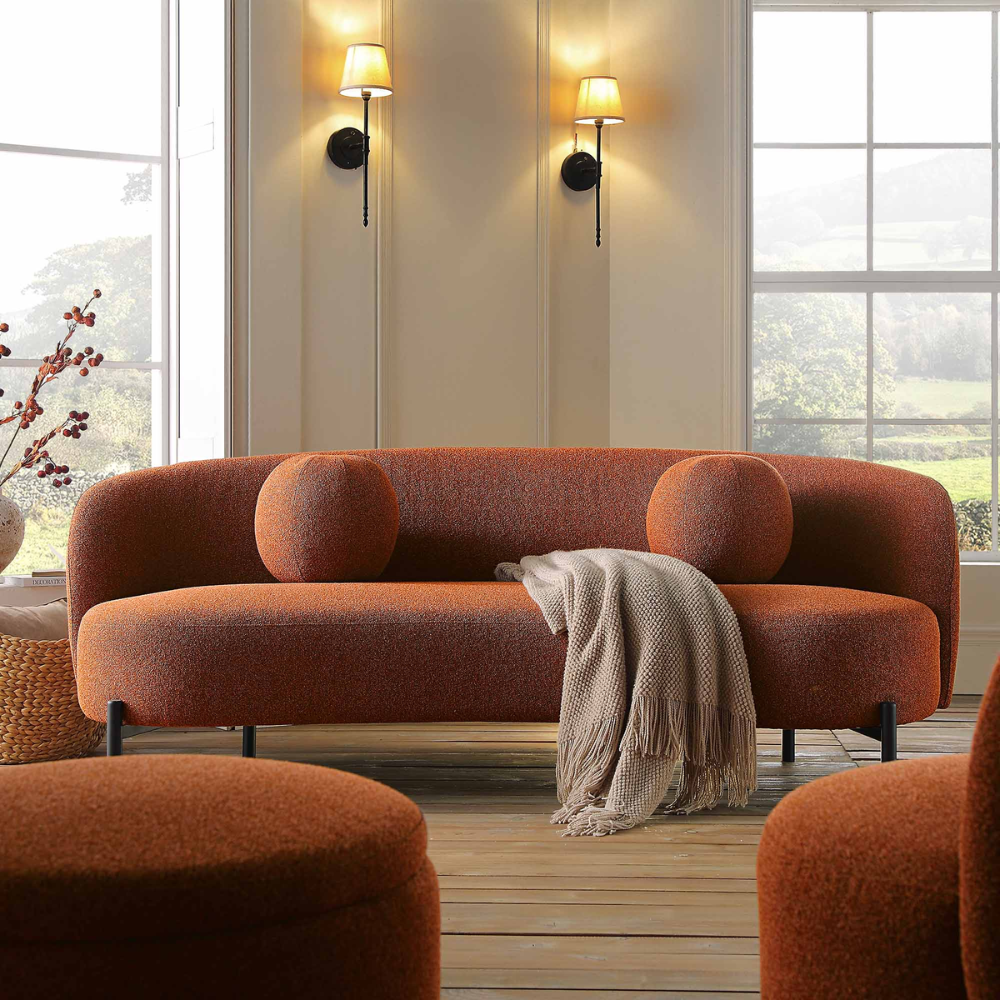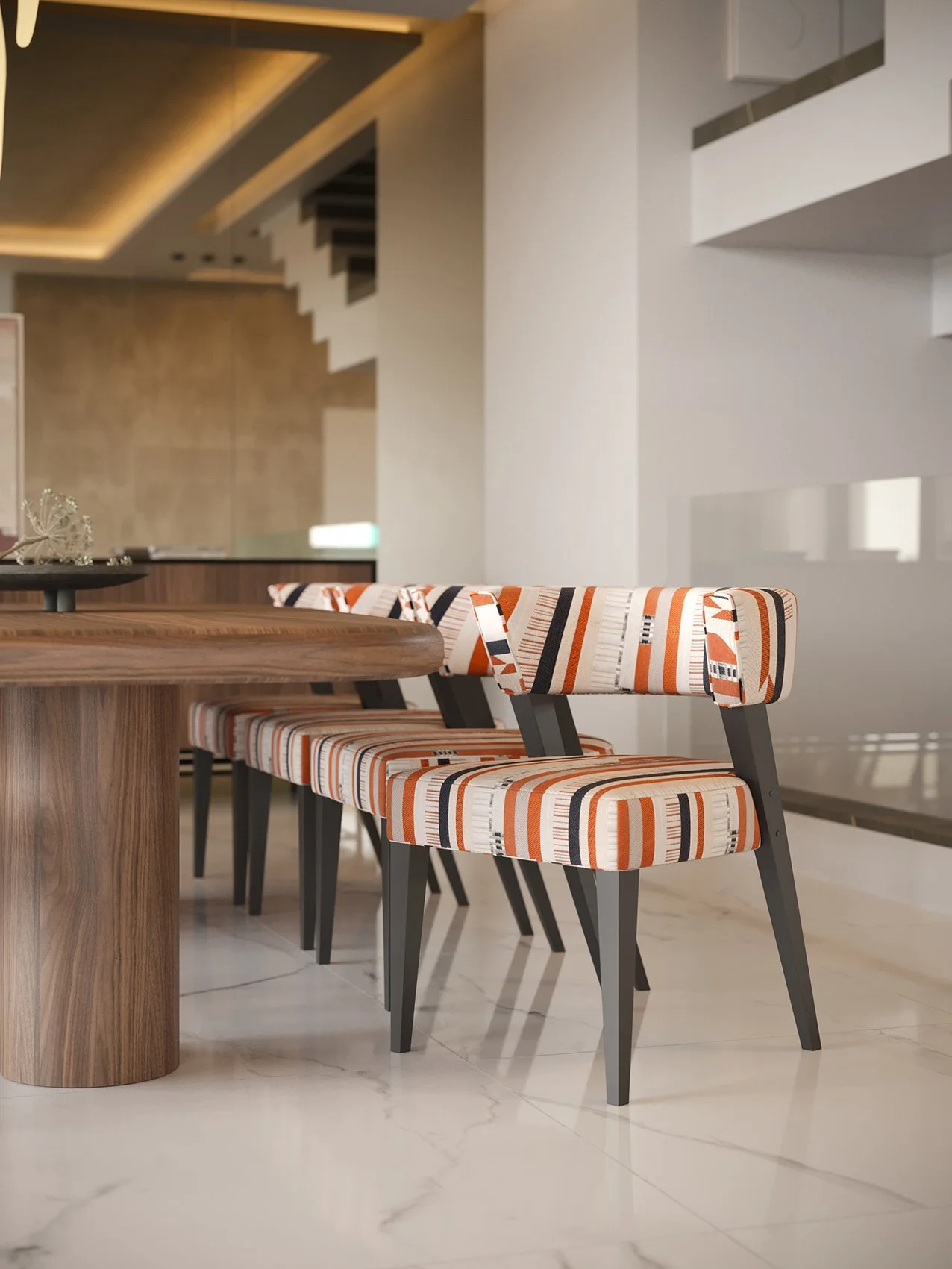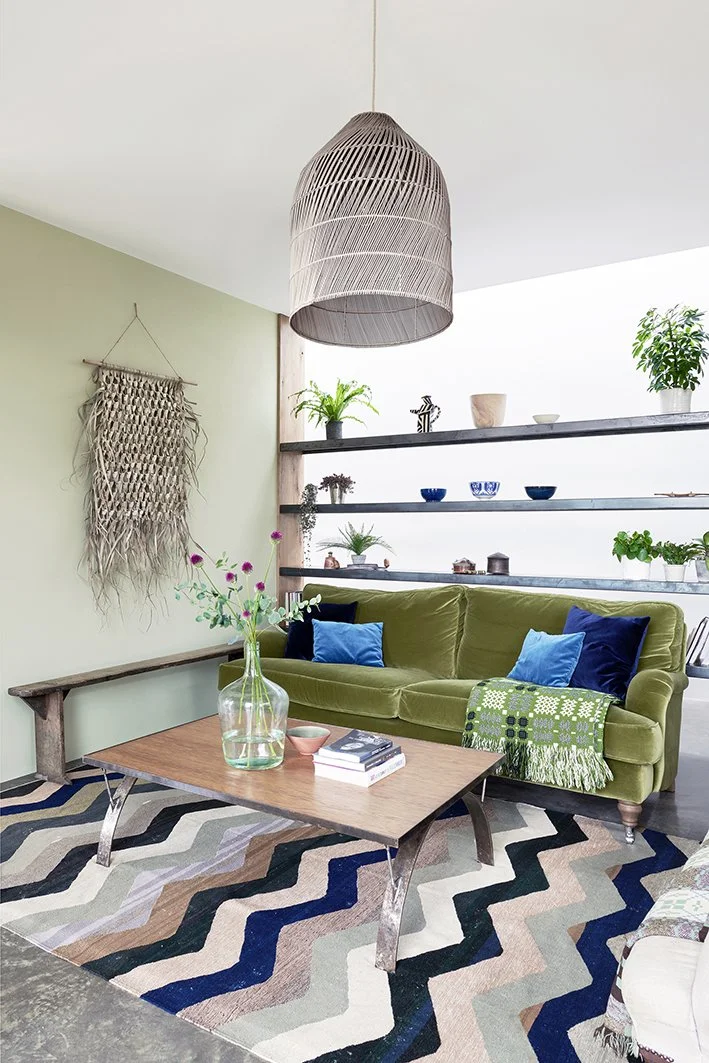STYLISH INTERIOR ELEMENTS TO ELEVATE YOUR HOME from curves and metallic finishes, to lighting and foliage
Welcome to the BLOG
Hi, I’m Sandra.
If you're in awe of stunning interiors and crazy about home decor, you’re in the right place. As an interior writer, stylist, and photographer for leading magazines around the globe, as well as an avid home renovator, I am here to help you style your home with ease and confidence, like a pro.
On this blog, I’ll be sharing insightful articles packed with advice, tips, and ideas for home styling and decoration, along with inspiring tours of beautifully styled spaces. Having styled countless homes with very different interiors, I know it’s the final touches and thoughtful curating that make a space magazine-worthy, regardless of whether it’s an architectural masterpiece or filled with high-end furniture. And, rather than focus on one particular interior look or style, I aim to open your eyes to a wide variety so you feel inspired, not limited. Ultimately, I’ll show you how a little bit of styling can be transformational and take your home to a whole new level. Check out today’s post to find out about the key interior elements for a stylish home.
THE KEY STYLISH
ELEMENTS THAT WILL ELEVATE
YOUR HOME
Photo: Sandra van Aalst
Over the years, I’ve learned that there are a handful of key elements and finishes that will instantly make your home feel more stylish and visually pleasing. First, a vignette - a considered grouping of objects, like the arrangements on my shelves pictured above. I’ll then cover the other key elements in the article that I rely upon for a stylish interior, including my favourite - open shelving. Shelves are brilliant for showcasing your vignettes, and you can style with all sorts of things as well as home decor, books, and plants. As you can see, mine hold a pretty eclectic mix. In the shot you’ll spot several of the key elements, including a curved chair, a rustic wooden table, metallic plant pots and starfish, artwork, dark-toned books and pots for contrast, greenery, and a statement light overhead. In this blog post, I’ll also explore purposeful contrast, vintage pieces and pre-loved finds for individuality, curves and organic shapes for an amalgamation of old and new. Plus, I’ll show you various metallic accents and give you tips on other interior elements that can elevate your home, such as wall decor, statement pieces, stylish lighting, natural materials, print and pattern. Not forgetting the element I include in every room - some form of foliage.
VIGNETTES & STYLED SURFACES
You can arrange a vignette on any surface, such as a coffee table, sideboard, kitchen island, windowsill, shelving, mantel, or a kitchen worktop, like in the image here.
Photo: Benjamin Moore
I love a vignette. If you arrange the objects well, it can be a real feast for the eye. Whether it’s a living room, entryway, kitchen, bedroom, or bathroom, a stylishly curated group of items works so well in any space. I have at least one vignette in every room in the house. The items you use for styling your vignette depend, of course, on the room. Generally speaking, you can use home decor, such as vases and vessels, table lamps, candles, as well as plants and books. The unpredictable items, such as those found on your travels, as well as artefacts that are personal to you, will undoubtedly add more character and interest to your vignette. Surfaces to create a vignette in your home could be a console table in an entryway, a sideboard in a dining room, a mantel and coffee table in a living room, or a side table and windowsill almost anywhere. In a bathroom, for example, you may want to arrange a small vignette on a small side table or countertop, which could include a plant such as a succulent, an attractive product bottle, and a scented candle. In the kitchen, you are not only limited to home decor objects, plants, and books; you can also add attractive, kitchen-related items such as vintage chopping boards, concrete vessels and kitchen utensils, glass jars for food, and dishes for herbs, fruit, and vegetables. Check out the vignette pictured above with chopping boards, an olive plant, and various vessels set against gorgeous wall colour and kitchen cabinets painted in Benjamin Moore paint. A key tip when curating your vignette is to include objects of varying heights, sizes, and shapes. You may have heard the triangle trick mentioned before, which means grouping your items by height in a sort of triangle. For instance, a plant might be the tallest part of the triangle, a candlestick slightly lower, and a pot at the bottom. When placing the objects, start with odd numbers, working in threes or fives to create balance and harmony. But don’t rule out pairs completely, as on some surfaces symmetry might look better, or they just might work well as a pair, like the two green candlesticks I have on my shelving. Finally, mix different textures, for example, a smooth ceramic dish with a rustic concrete plant pot. You just need to have a play, and once you have created your vignette, stand back, or take a photo and see how it looks.
Photo: Sandra van Aalst Charlie Luxton’s sustainable new build featured in The Times property section.
On the dining room table or kitchen island, I think a vase of flowers or foliage always works well, coupled with items such as dishes of fruit, like in the image above. You may want to choose objects that complement the room in both style and colour, like in the dining room pictured here which I styled for a shoot, where the different green tones of the limes and herbs complement the colour of the table runner and throw.
Photo: Oka
You can bring art into your vignette, like the two framed pieces from Oka pictured here which, placed above a beautiful patterned vase with branches of berries, instantly create an eye-catching display. If you are creating your vignette on a console table like this one, you can also lean a frame against the wall, which is always good to do in the first instance to see if the group works together before you put a nail in the wall.
Photo: Sandra van Aalst
Another ideal surface for a vignette is a coffee table. You could display hardback books, candles, and flowers, or use a tray like on the table pictured here where flowers and candle holders have been grouped together. Trays are great for creating a vignette on many surfaces, and on a coffee table you can also use them to tidy away and slightly conceal practical items like coasters and television remote controls.
Photo: Sandra van Aalst at WOW!House at the Design Centre, Chelsea Harbour
A considered grouping of home decor items teamed with books is perfect for shelves. If you want to add height to your vignette, you can place a small pile of hardback books and perch a decorative item on top, as shown on the shelves in the image of one of the WOW!HOUSE rooms pictured here. The books have been styled next to a gorgeous vessel with flowers to turn this part of the shelf into a polished vignette.
CURATED SHELVES
Shelves are probably the best way to effortlessly add stylish touches to a room. They can easily be attached to a wall or be freestanding as a room divider, like the bespoke shelves pictured here.
Photo: Sandra van Aalst - Charlie Luxton’s sustainable new-build home featured in The Times
What I like about shelves is that they are functional but also really add to the decorative appeal of a room. They naturally draw the eye and allow you to showcase gorgeous things, such as personal artefacts, together with decorative items, artwork, and books. Whether floating shelves in a minimalist living room, recessed in an alcove, or purpose-built like the wood and steel ones pictured above, shelves offer you the chance to play around with displaying items in various textures, colours and shapes. By mixing books, decorative objects, and framed art, with a plant or two, you can create a display that feels stylishly curated but also personal and lived-in. When styling shelves, balance is really the key. It always takes me at least a couple of weeks of moving items around before I am satisfied. Start by layering objects of different heights, materials, and textures. On larger shelves, you can feature books stacked both horizontally and vertically to create variation. A bit of greenery, such as a small potted succulent or trailing plant, brings freshness to the shelving. But avoid doing what I do, which is overcrowding. A little empty ‘negative’ space is just as important as the objects, allowing them the room to shine. Rearrange and rotate your pieces until you are pleased with the result. Once you have everything in place, just like with a vignette, it’s really useful to take a photo and also to leave the shelves for a few hours before coming back to reassess your styling skills.
Photo: Sandra van Aalst
I have always been a fan of floating shelves and was keen to have a wall of shelving in my dining room. I was about to order straight shelves when I saw curved floating shelves in the London Soho Home store, just in the nick of time, and ordered mine curved, too. The best thing about floating shelves is that there are no brackets to distract from your display.
Photo: The White Company
These off-white recessed shelves are ideal if you have an alcove or are able to build them into the design of your room, as they really stand out as an architectural feature. I like the simplicity of these shelves and also the way that the bottom shelf is boxed in. The shelves pictured here are displayed with gorgeous items from The White Company, including a portable lamp, vases, vessels, and a candle.
Photo: Sandra van Aalst
There are shelving units that you can buy off the peg - even rather fancy ones. These unusual shelves by Roche Bobois have vertical slats that divide the home decor objects in an interesting way, allowing each one to have its own mini display box. Here, the shelves have been styled with a simple mix of black and white pieces, a framed photo, plants, books, and a few personal touches to give it an individual look.
Photo: Sandra van Aalst
I prefer shelves in the kitchen instead of high-level cabinets, as there are so many attractive items you can have on display, such as the cute glass cookie jars and mini copper pans pictured here. And with their ornate wrought iron brackets and weathered wood, these vintage shelves are quite special.
METALLIC FINISHES
Whether it’s a brass floor lamp in a heritage interior, or vintage copper, like the pendant lights in this contemporary home, no matter how small, metallic finishes bring a touch of opulence to a room.
Photo: Sandra van Aalst for Modern Rustic magazine
I believe that most interiors can benefit from some form of metallic, no matter how tiny, as the finish always catches the eye. Even in a contemporary space, like the kitchen pictured above, the metallic copper pendant lights and Tolix stools add an interesting patina and sheen to the room. These striking pendants bring in metallic in a more organic way and would also look great in a rustic-style setting. You can weave metallic materials into your home in various ways. In a kitchen, the tap is the obvious item, but you could also have a metallic plant pot, frame, chairs, or stools. Mirrors count, too and have the added benefit of reflecting the light. A sophisticated look can be achieved when contrasting metallics with softer interior elements, like in a bedroom where, for example, you might choose metallic pendants to contrast with the casual look of linen. I have a brass floor lamp in my living room which just gives that splash of shine without being overpowering. And don't be afraid to mix your metals, as they can really complement each other.
Photo: James McDonald courtesy of Design Centre, Chelsea Harbour
This was one of my favourite rooms at WOW!House, as it is rich with texture and colour and so atmospheric. The tactile interior is enhanced further by a couple of metallic pieces with the sculptural side table and candlesticks on the coffee table.
Photo: My furniture
The artwork, side table, and chair by My Furniture in the image pictured here all have metallic details, with the artwork having lashings of gold leaf. The chair, table, lamp, and artwork look fabulous together but would also work as standalone items.
Photo: Atkin and Thyme
These nesting tables are a good example of how you can add sheen and would work in a contemporary or heritage interior. The pair from Atkin and Thyme have a black powder-coated base and removable trays.
Photo: Sandra van Aalst
The metallic in this interior manifests itself as a brass mid-century modern light above a bed. This was in a bedroom I photographed and shows how a subtle amount of sheen really brings sophistication to any colour scheme.
STYLING WITH FOLIAGE & PLANTS
Bring the outside in with houseplants or simply a branch from a tree or shrub.
Photo: Sandra van Aalst
Being a keen gardener, I have always been a huge fan of plants, flowers, and foliage. A tall plant placed in a large pot on the floor - think Bird of Paradise, like in the image in my home here, or Madagascar palm - can really make an impact and serve as a focal point in a living or dining room. There are numerous ways you can bring plants and greenery into your home. If your surface space is limited, try hanging a plant from the ceiling. Many online stores and garden centres now sell a gorgeous array of hanging pots. For surfaces such as kitchen countertops or sideboards, you could opt for tall, upright plants, such as the Snake plant, or if against a wall, plants with large leaves, like the Cheese plant, can really add drama to a room. On shelves, a coffee or side table, I find smaller plants such as succulents work well. Try grouping three different species, as their varied leaves and textures will look more interesting. In your bathroom, go for plants that survive without much natural light, such as a fern or a Peace Lily. Air plants are brilliant, too, as they thrive on moisture in the air. I have two of these in my bathroom, as well as an Aloe Vera. If you feel that any kind of house plant is just too much trouble, consider artificial plants, which are becoming more realistic and will give your room the splash of green you desire. Fake plants are also ideal for shelves that are high up, dark corners, and rooms with no or low light, where real plants wouldn’t thrive. Don’t forget that even without a single house plant, you can still bring the outdoors inside with branches clipped from your garden. This is often what I would do when I arrived to photograph a house, only to find there wasn’t a single plant anywhere. A branch or two in a vessel or vase gives a natural, stylish touch to any room.
Photo: Sandra van Aalst
This Crittall conservatory on a houseboat wouldn’t be complete without all the hanging plants and a large statement plant. Most plants thrive in light-filled conditions like this, but some prefer indirect light. Look out for my forthcoming article on the best plants for different environments.
Photo:Cox and Cox
The pot you display your plant in makes a huge difference to the overall look of a room. Having recently revamped my living room, I found that the straight planter looked out of place, so I’m looking for something more rounded, like the curved rattan planters by Cox and Cox pictured here.
Photo: Sandra van Aalst at The Design Centre, Chelsea Harbour
This plant, in this gorgeous contemporary ribbed vessel, looks stunning as a standalone piece on a console, but could also be placed on a sideboard or mantel. This type of large vessel with a plant often looks impressive alone rather than styled in a vignette with other items.
Photo: Sandra van Aalst
These are a few different species I displayed on the floating kitchen shelves in my previous house. I have coriander in the dish on the worktop, two trailing plants, and succulents, all in either white pots or grey concrete vessels to create unity. I’ve then woven in artefacts, like the little cow statue, concrete apples, and for something fun, a vintage ‘Danger Men Cooking’ sign.
STATEMENT PIECES
Adding a statement piece to your home will definitely give it the ‘wow’ factor.
Photo: Arteriors
I’ll admit, I have the tendency to want everything to be a statement piece - the light, rug, sofa, chair, and plant - the whole shebang! But in reality, one standout item has more of an ability to impress. A statement piece could take the form of a gorgeous pendant light like the chandelier from Arteriors pictured here, a large-leafed plant in a stone pot, a stunning vintage rug, a sculptural accent chair, or a bold piece of artwork. It could even be a bath in a bedroom. See my blog post on Stylish Bedroom Ideas to see the statement bath I placed in my guest bedroom. The trick is to balance the rest of the decor around your statement piece while allowing it to shine. Different pieces can leave different impressions and vibes - a mid-century modern glass chandelier in the dining room, for example, can elevate the space with elegance; a funky abstract painting brings in a fun element, while a richly patterned rug brings interest to a room. When incorporating a statement piece into your interior, consider the size and colour to ensure that it enhances the rest of the room’s interior scheme. I will admit to having bought an accent chair, see below, which was a statement in itself. Then, when a couple of years later I bought a new sofa, both were vying for attention, yet did not work together. Final tip: Don’t be afraid to scale up. Oversized pieces, especially pendant lights, rugs, and plants, often make the boldest statements and nearly always have the wow factor just for their sheer size.
Photo: Sandra van Aalst
Chairs are not only accent pieces, they can also make a statement. When I first bought this curved, contemporary armchair from Soho Home, it was the statement piece in my living room. I’ve since moved it into the dining room, and now it only has to compete with the dining table chairs.
Photo: Sandra van Aalst
I photographed this impressive 3D framed sculpture of Sugarloaf Mountain in Rio in the entryway of a beach villa in Brazil. It really stopped you in your tracks when you walked in the door. The console table is paired back with simple styling in similar tones so as not to distract from the artwork.
Photo:Caffe Latte
Together with artwork and pendant lights, mirrors can also be statement pieces, and having more than one certainly does the trick. Pictured here is a set composed of different sizes with forms resembling coffee beans by Caffe Latte. I also placed three mirrors together in my kitchen to create a statement mirrored wall.
Photo: Sandra van Aalst
This image of my own stairwell has both a feature light together with a mural on the wall, which makes a statement, being seven metres high. Although feature walls have been frowned upon, they can work in a space like this, especially as it’s not just a repeat pattern. I tied in the natural tone of the seagulls with a seagrass stair runner, and the rattan pendant to give a cohesive feel.
STYLISH LIGHTING
Whether it’s a table lamp, floor lamp, hanging pendant, or wall sconce, light fixtures add style to any space.
Photo: Pooky lighting
I find lighting a crucial part of a stylish interior scheme, yet it is so often deprioritised. In most rooms, especially an entryway and living areas, I have always chosen the light fixture first and, on my self-build, I used a lighting designer. Light fixtures are more than just sources of illumination—they can be stylish pieces that set the tone of an interior scheme. This was the case in my living room where I had two oversized linen pendants and then designed the rest of the room around these. Whether it’s a sculptural floor lamp or a sleek pendant over the dining table, light fixtures add depth and style, playing a key role, like the wavy, wonky rattan pendants by Pooky Lighting pictured here, which is the first thing your eye is drawn to in the room. Table lamps are a key styling item. They can light up dark corners, and with such a choice of stylish bases in so many different finishes like rattan, wood, metal, stone, they can instantly elevate a surface. You can use table lamps on consoles, nightstands, or even dining tables, with the brilliant invention of the portable rechargeable lamp. There are some gorgeous shades around too, which can tie in perfectly with your interior scheme. While pendant lights can be a real feature in hallways, living rooms, over dining tables, or kitchen islands, floor lamps work beautifully beside a chair or sofa. Wall sconces can also be super stylish and can look great in certain places in the home. Finally, there’s task lighting. I personally can’t get excited over ceiling spots, although they are part of layering lighting, especially in a kitchen and bathroom.
Photo: Sandra van Aalst
This is a portable lamp I bought from Abigail Ahern and is ideal for lighting up my shelves. I have one at either end on different levels. As I didn’t want any cables disrupting the flow of the shelves, it was not possible to use a regular lamp requiring electricity.
Photo: KES Lighting & Home
This image demonstrates that even in a living space, pendants don’t need to be hung in the centre of a room. This curvy, delicate, hand-blown glass pendant by Kes Lighting & Home turns a chair in a corner into a stylish nook.
Photo: Sandra van Aalst
These gorgeous glass pendant lights look super stylish hanging next to the bed. Wall lights and table lamps also work well, like the retro Anglepoise black lamp pictured here, which looks great on a surface in any room in the home and acts as a good reading light by a bed.
Photo:Pooky
Table and floor lamps are a great way to bring pattern, colour and texture into a room. Although not a floor lamp, this gorgeous lamp by Pooky, with its Ikat print in berry-coloured tones, placed on a table adds height so it stands proud and is a key feature in the room.
VINTAGE, RETRO & PRE-LOVED PIECES
Vintage, retro, and pre-loved pieces can add character to any interior.
Photo: Sandra van Aalst interior by Helena Impett Interior Design.
I have chosen to show you the above image, which has vintage, retro, and pre-loved items all in one room. In this open-plan kitchen/living area pictured above, interior designer Helena Impett has cleverly decorated her purpose-built vacation rental with vintage, retro, and pre-loved pieces, including the retro leather chair and stool, a pre-loved cabinet in the kitchen, as well as a vintage chest and oars from her grandfather in the living area. Bringing vintage, retro, and pre-loved items into your interior not only creates a more lived-in atmosphere, but it also gives you a really distinctive look that reflects your individual personal style. It shows off your styling skills, too! Stylish hotels like Soho House incorporate vintage and retro pieces of furniture into their decor, while British hotel group, The Pig, has pretty much based its entire interior scheme around vintage finds. The beauty of vintage is that the piece is totally unique to you. Vintage pieces can easily be found in markets, garage sales, vintage shops, swaps, and eBay. Unless you are buying an actual antique piece (which means it’s 100 years or older), they are fairly affordable or even free if you have an item that belonged to a family member. You can buy retro pieces, which means a reproduction of an original style, such as the Eames and Wishbone chair designs, which also give a sense of place to a room.
Photo: Sandra van Aalst featured in Coast and Ariadne at Home.
This vignette, which I styled with interior stylist and homeowner, Clare Southcombe-Homes, shows that vintage pieces can also look great in the kitchen, especially vintage chopping boards, which always add style. You can also probably spot other vintage items, including the aged terracotta pot, the metal tray, and wooden Bovril box, which makes an interesting container for jars and herbs.
Photo: Sandra van Aalst
This pretty bedroom has several items that are vintage and antique, including the chair, side table, frame, and an antique chandelier, all of which look striking set against the yellow backdrop, painted wooden floors, and beamed ceiling. Vintage items are roughly considered 20 years or older, while a true antique is a century old!
Photo: Sandra van Aalst featured in Coast and Ariadne at Home.
An intricate antique French mirror and chest with mini drawers were both found by interior stylist Clare in her local vintage shop. Both pieces really make this living room unique, and the chest is an ideal surface for Clare’s styling skills, where she displays vintage and handmade items.
Photo: Sandra van Aalst featured in 25 Beautiful Homes
The chair in the living room of this converted barn was pre-loved and has been reupholstered by the owners in a stripy, blue-toned fabric. The chair contrasts perfectly with the contemporary polished concrete floor. There is also another interesting vintage piece, which was originally a medicine cabinet and now displays glassware.
ORGANIC MATERIALS
Bring something natural into every room for a modern, sustainable interior.
Photo: Naturalmat
Whether your home leans towards contemporary or is heritage, natural materials work in every interior. With sustainability in the forefront of our mind, natural textures have become increasingly popular. Beyond the bones of your interior - such as the walls and floors - you can achieve an organic look simply with a rugged wooden coffee table, a linen throw, or a stone vessel. Wood, linen, wool, stone, rattan, and bamboo bring the outside in, as in the Naturalmat bed pictured here, where the bed made from pure wool sits beneath a rattan pendant in a room of aged stone walls complete with exposed wood rafters. Organic materials add tactility and look particularly stylish in our homes, especially when teamed with rich, luxurious fabrics such as velvet and cashmere, as shown here.
Photo: Garden Trading
This gorgeous bedroom has plenty of natural materials with pure linen bed linen, pillowcases, and a throw, as well as a wooden bed frame and table beside the bed from Garden Trading.
Photo: Sandra van Aalst for Inside Out magazine and Wonen Landerlijke Stijl
This was the guest bedroom in my last house where I added a rustic wooden bench on the limestone floor to bring in natural materials. Although I styled the room for a shoot, the bench also proved useful to display books in the bedroom.
Photo:Naturewall
If you want to bring natural materials into the interior decoration, a fluted headboard or wall is a great way to introduce nature, like the Natural Oak Reeded wall panels by Naturewall featured here. I have something similar in bamboo, which brings an organic and coastal feel to my bedroom.
Photo: Sandra van Aalst
Even in a kitchen with a contemporary countertop, you can add items like wooden vessels, rattan pots and chopping boards to soften the hard surface and bring nature into the space, like this circular vintage chopping board pictured which we used to create a vignette for a shoot.
CURATED COLLECTIONS & DISPLAYS
A curated collection of items in a theme, such as the white vessels pictured on this ornate mantel, really make an impact. Displayed on a surface such as a shelf, table, or mantel, a collection is a great way to turn everyday objects into an intentional feature.
Photo: Sandra van Aalst featured in 25 Beautiful Homes and Wohnen magazine
Styling with a collection of similar artefacts or vessels is a simple way to add personality and interest to your home. Your collection could be made up of different items but in the same colour, like the white candle stick, vessels and painted branch in the image above, which we styled with white objects for a house feature that appeared in two magazines. Whether it’s a bunch of coloured glass bottles, handmade ceramics, decorative calligraphy brushes, shells, unusual shaped small dishes, candlesticks, necklaces, lanterns or mini sculptures, the list in endless, Clustering similar items together creates an impact. Like a vignette, you can also play with height, shape and texture, but here it’s more about the collection itself, which will be impressive it its own right. And rather than sticking to odd numbers, you might have more in a collection like the six ceramic pots below, so you don’t need to stick to the odd number styling strategy. You may already have a few items to start a collection with items you bought or found on your travels. Vintage, thrift and charity shops are also a great place to thrift for pieces for a curated collection. Look out for my blog post on thrifty vintage pieces.
Photo: Sandra van Aalst
This ceramic jars were collected by rug designer Eric Lindstrom and displayed on a contemporary hearth in the summer when the fire was not in use. Eric has also thrown in a tall ceramic vase with fresh flowers to bring height and extra interest to the display.
Photo: Sandra van Aalst
This unique collection belongs to artist Armi Maddison and I photographed it while we were shooting the house for Modern Rustic magazine. Look carefully and you’ll notice a wonderful eclectic mix of artefacts, including vintage spoons, tiny white pebbles and miniature animals, as well as letter stamps for printing and vintage glass bottles.
Photo: Sandra van Aalst
This is my own collection of white vessels that I styled for a shoot with a mixture of branches and flowers. What works with this collection is firstly, the varying heights and shapes, and secondly the different textures on the pots - from shiny to patterned and plain.
Photo: Sandra van Aalst
Whilst photographing a house in LA, I came across this unusual collection of coloured glass faces. Displayed in a Child’s bedroom next to soft toys and storybooks, they gave the shelving a playful and unique feature.
WALL DECOR
Wall art, whether a traditional painting or wall decor, art tells a story, adding character and your personal stamp to your home.
Photo: Caffe Latte
Very few homes look good with completely bare walls. That said, you don’t want to cover every inch. A little of what we call in the interior industry ‘negative’ empty space, to allow for the pieces you are displaying to stand out, is necessary unless it’s a full-on gallery wall. Think about what type of art you want to feature and what would best suit your space. It could be one large print or painting, like the stunning print in this contemporary living room by Caffe Latte, that instantly adds visual interest and really makes a statement. Art doesn’t have to be limited to just frames and canvases. Consider what else might work; a fabric mural hung on a pole, a bunch of rattan fans, or an entire gallery wall with a variety of different frames and artwork mixed with artefacts. If you’re creating a gallery wall, start with a strong focal piece at eye level and arrange the rest around it. I like to group at least three different sized frames together on a wall and also place framed art and photographs on shelves in-between books and decor pieces. For a more eclectic look, mix various art forms and objects, such as mirrors, to reflect light and add a more 3D effect. To plan your display before hanging it on the wall, arrange the artwork on the floor first and play around to explore different configurations. Alternatively, wall decor is a fun and engaging way to create a display, and you can feature all sorts of items, from ceramic plates, hats, and a mixture of different shaped mirrors, to an oversized dried tropical leaf. I have photographed a bedroom where a group of five vintage handbags were displayed as a rather unique piece of wall art! Look out for my forthcoming blog on wall decor.
Photo:Desenio
With five different framed prints from Desenio, the interior pictured here is a good example of a gallery wall, with the largest print central, then smaller, different-sized frames surrounding it. Notice how the frame and artwork are all in neutral tones and pair with the wall and furniture.
Photo: Sandra van Aalst for Homes & Gardens magazine
Plates have been used to decorate walls for years, and I created my own take on it in the utility room in my last house. As it was also an entrance, I wanted an impactful display, so I opted for a mixture of vintage Delfts Blauw and modern plates, including two with graphics, and the others with illustrations.
Photo: Trowbridge Gallery London
Art works beautifully above a bed. I always find this wall space often feels like a void and needs something on display. In this image, a unique, handmade collection of leaves by Trowbridge Gallery looks stunning against the forest green wall.
Photo: Heavenly Homes and Gardens
This example of wall decor is to show you that it’s not only frames and canvases that can successfully decorate a wall. Wall decor is where you can get creative! You can use all sorts of items, like these woven dishes and woven wall hanging from Heavenly Homes, made from natural palm leaves with a bamboo stick and jute string for that totally natural look.
CURVES AND ORGANIC SHAPES
Curves and organic shapes are on-trend and will continue to reign.
Photo: daals
I am mad about curves. So where did they appear from? Although curved furniture was around in the 1900s from designers such as Arne Jacobsen with the ‘Egg’ chair, I believe it has been one of the best design revivals, inspired by designers such as Faye Toogood with her ‘Roly Poly’ chair, and Sarah Ellison with her ‘Huggy’ and ‘Muse’ sofas, which went viral. Concerned it might be a fleeting trend, I waited a while before I took the plunge and swapped my rather worn sofa for a new curved modular design. Now it’s in situ, I can really see how curved furniture makes a huge difference to a room, and you can see how this stunning curvy sofa by Daals really softens the lines of the building and gives an extended feeling of space. A curvaceous shape can help balance out the straight lines of walls, making a room flow better and more visually harmonious. But you don’t have to splash out on furniture. Something with curved contours, even if it’s just a curvy vase, can bring this element into your interior. You could also have a curved mirror or accent chair, which will bring curves into your living area. Curves and more organically shaped furniture and home decor have now filtered through to the high street, and just like Crittall-style windows, which were a huge trend that I also succumbed to, they are now timeless.
Photo: Sandra van Aalst at the Design Centre Chelsea Harbour
A stunning, curvy vase like this one can really bring curves into your interior in an understated yet utterly modern way. Other home decor pieces you can find these days with curves includes lamps, pendant lights, and candles. You can also look out for curvy sculptures.
Photo: Sandra van Aalst
I chose a sofa that was straight on one end and curved on the other, designed to be interchangeable. However, when it situ, I soon realised it only worked one way which, luckily, turned out to be ideal, as the curved section allows you to look out at the view. Overall, I’m very happy with my curved piece.
Photo: Origins Living
I love the asymmetrical shape of this mirror, which is an attractive piece inspired by the fluidity of water, with curved rather than straight edges. And the great thing about a mirror like this one by Origins Living is that it can be hung in any direction and always looks great.
Photo: Arteriors
You have more options to bring curved furniture into your home than just sofas and chairs, as designers are also rounding the corners of tables and creating wavy or curvy silhouettes that are more fluid, like these rather special outdoor coffee tables by Arteriors.
ADD CONTRAST
It could be the door or window, a framed piece of artwork, or even a black curtain pole, which adds contrast and depth to a room.
Photo: Sandra van Aalst
I always believe in having a couple of dark items, even in the brightest of rooms, as it creates contrast and definition, which adds depth and makes the room feel less flat. This doesn’t mean you need to paint a wall black or even have black-framed doors; you could simply have a black pot and a piece of artwork or a print that has a dark frame. I have always included something dark in my interior, which, in my last house, was the Anthracite doors (a shade that is a dark bluish grey), but now I have ebony wooden floors in my new house which look superb, although they do show the dog hair! I have recently redone my living room with off-white and terracotta tones, but once I reached the styling stage and was arranging items on my mantel, I realised that as the inner surround of the fireplace was black, it was clear that I needed at least two black home decor objects to make it feel cohesive and pull everything together. I swapped a rattan pot for a black one and have three different sized black picture frames that will go on a nearby wall. That’s all it needed, so the black of the fireplace doesn’t stand out like a sore thumb.
Photo: Beach House Art
The interior pictured here illustrates two things for me. The first is that you can bring in something dark simply through the artwork, like the figure-of-eight knot dark blue print by Beach House Art pictured here. The second is that this interior has a black wood-burning stove, which needed to be tied in with other elements, and the artwork successfully achieves this.
Photo: Sandra van Aalst
This is the striking living room of a converted water tower I photographed. The homeowner, who is an artist, has created dynamic contrast to the original exposed brick wall, structurally through the dark window frames, but also with carefully chosen darker details, such as a dark grey radiator, sleek console table, and black iron sculpture.
Photo: Artisans of Devizes
The dark doors and windowsill in the image here contrast with the gorgeous chevron-tiled floor by Artisan of Devizes, showcasing the floor as the standout feature. To create a more cohesive feel, the dark doors are paired with a geometric cushion and a dark-framed sofa.
Photo: La Redoute
You don’t have to only use black to bring in something dark. The darker shades of greys, greens, and blues also contrast well with lighter hues, like this chair from La Redoute, which is a rich, dark green velvet but adds real contrast to the pale-toned room.
PATTERNS AND PRINTS
Patterns and prints can make an interior more three-dimensional, adding another layer of texture to the overall scheme. In this image, the striking, patterned chairs from the Stylish Club really add interest to this contemporary-style interior.
Photo: Stylish Club
I always try to bring some form of pattern into a room. In my bedroom, as the walls and bed linen are plain, I have a patterned throw I bought in Morocco together with a cushion with a large flower print. You don’t need to go overboard either; just a few touches here and there can make a big difference as pattern really lifts a space. Think lampshades, a patterned rug, or block-printed cushions thrown on a plain sofa or bed; this prevents a room from feeling flat. From a design perspective, I like to introduce pattern through floor tiles, especially in kitchens and bathrooms where there’s often less scope for patterned furniture or soft furnishings. I have a bold geometric design in the bathroom, while in the kitchen I opted for vintage-style encaustic tiles with four different patterns as they add visual interest yet, being slightly faded, don’t overwhelm the space. So whether you opt for just a splash of pattern or an entire wall, using patterns and prints is also a great way to reflect your style, such as stripes for a classic look, florals for a heritage interior, or Kilim-style prints for a more ethnic style.
Photo: ILIV
This bedroom, with a papaya colourway weaving through the soft furnishings, is the perfect example of how you can mix different prints on various soft furnishings, yet it can result in an elegant and stylish look. The headboard, foot stall, cushions and curtains are all from the Orissa collection by ILIV.
Photo: French Bedroom
Block print has become popular in recent years, and this hand block Pushpa Flowers cushion and Bloom Bedspread lend themselves to artisanal charm. The palette is anchored with similar tones. The imperfections of hand block printing add character to this traditional form of print.
Photo: Sandra van Aalst
Rugs are an ideal way to add pattern to an otherwise plain interior. The zig zag rug pictured here is a statement in its own right and contrasts perfectly with the velvet sofa. Notice that the sofa cushions are kept plain so as not to compete with the rug, with just a throw bringing in a different pattern.
Photo: Sandra van Aalst on Kit Kemp’s stand at The Design Centre, Chelsea Harbour. www.kitkemp.com
Patterns and prints can work together, like the wallpaper and lamp pictured here. Both the base and the shade work well displayed against the wallpaper as they are all in tones of green and blue. Mix pattern scales like in the image here. You can also pair the floral with a fine stripe or geometric designs.
Let’s sum up
Now that you’ve read about the key interior elements to make your rooms more stylish, look around and see where you can make a difference. By weaving in some of these elements, such as a touch of metallic, stylish lighting, pattern, foliage, and natural materials, each small detail will work its magic to elevate a space.




